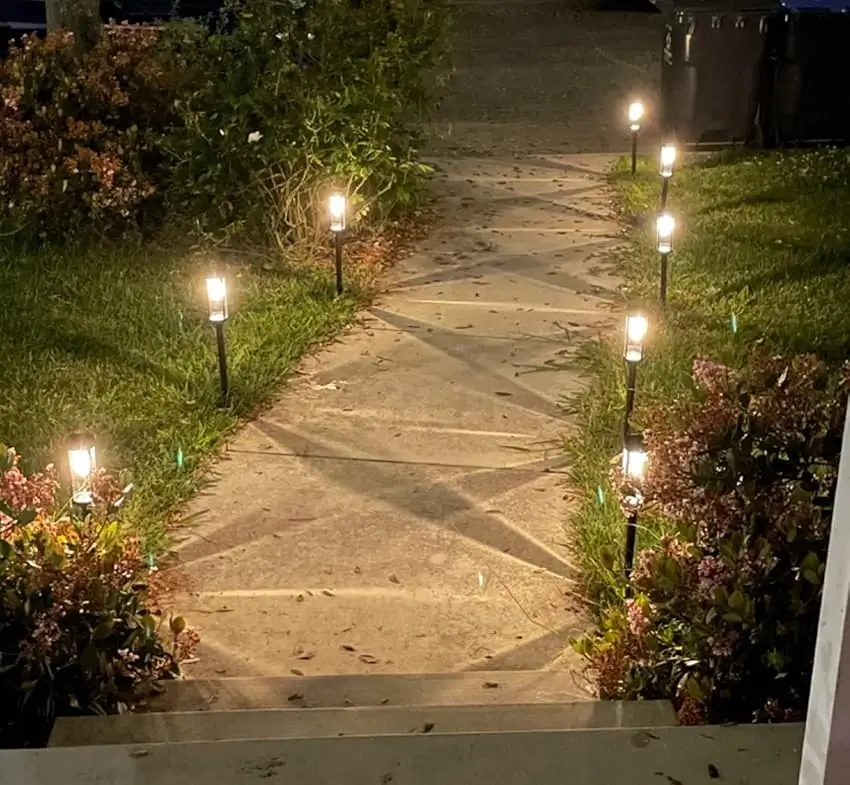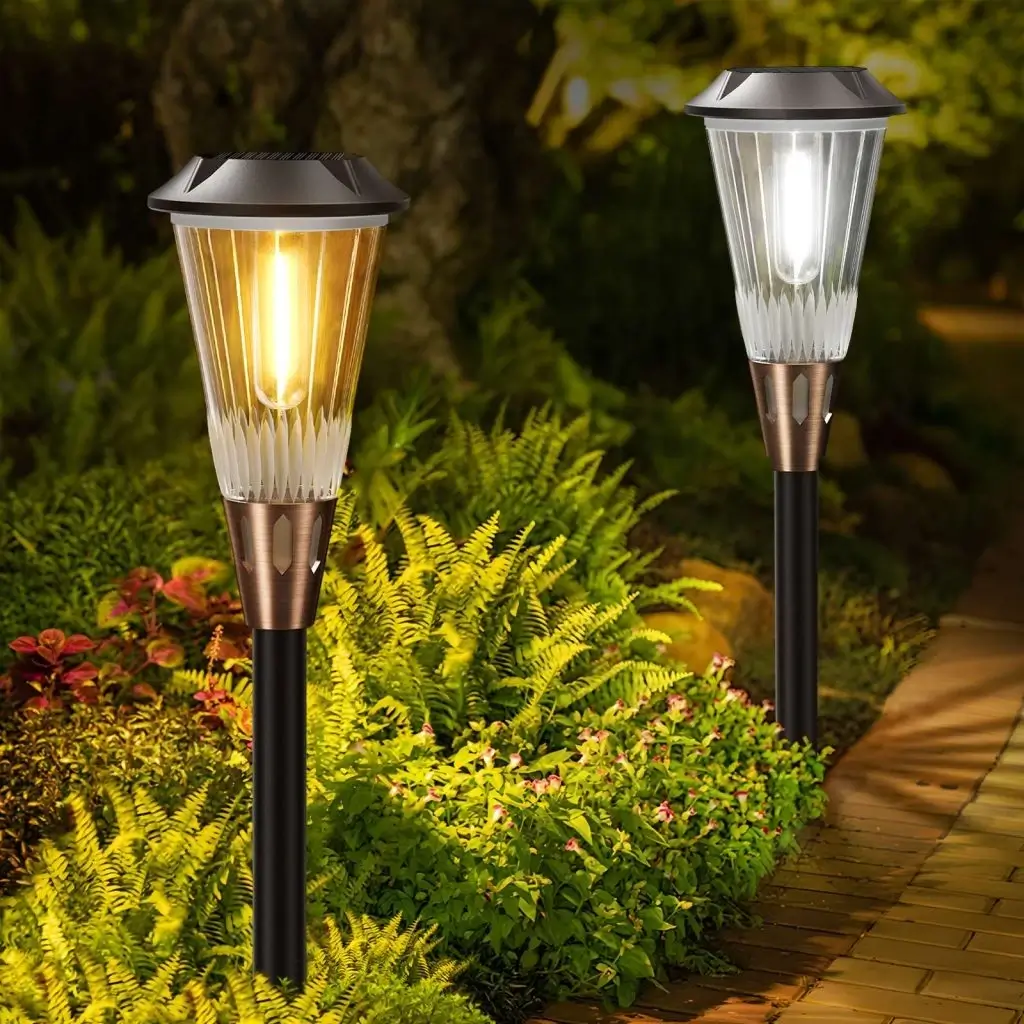Solar pathway lights serve a critical role in modern outdoor lighting design. These fixtures enhance safety, improve visibility, and elevate the aesthetic appeal of walkways, gardens, and landscapes. A key factor in their performance lies in lumens, the unit measuring the total amount of visible light emitted by a source. Selecting the optimal lumen output for solar pathway lights requires balancing functionality, energy efficiency, and environmental conditions. This article examines the best lumen range for solar pathway lights, drawing on technical insights and authoritative U.S.-based reports to guide the discussion.

Understanding Lumens in Solar Pathway Lights
Lumens quantify brightness as perceived by the human eye. In solar pathway lights, this measurement reflects the light output powered by a solar panel and battery system, rather than traditional electrical grids. Higher lumen values indicate brighter light, while lower values produce dimmer illumination. Solar technology relies on photovoltaic cells to convert sunlight into energy, stored in batteries to power LED bulbs during nighttime hours. The efficiency of this system directly impacts the achievable lumen output.
LEDs dominate solar pathway lighting due to their high efficacy, often exceeding 100 lumens per watt. This efficiency allows solar lights to produce adequate brightness with limited energy input. The U.S. Department of Energy (DOE) emphasizes LED performance in its solid-state lighting research, noting that LEDs achieve significant energy savings compared to incandescent or fluorescent alternatives. For pathway lighting, the goal centers on delivering sufficient illumination for navigation without excessive energy demands.
Ambient light levels in outdoor settings influence the required lumens. Urban areas with streetlights or residential zones near porch lighting need less intense pathway illumination. Rural or heavily wooded locations, lacking external light sources, demand higher brightness. User preferences also play a role, as some prioritize subtle accents while others seek bold, functional lighting.
Recommended Lumen Range for Solar Pathway Lights
Industry standards and authoritative analyses provide a clear lumen range for solar pathway lights. The Illuminating Engineering Society (IES), a leading U.S. organization in lighting research, offers guidelines for outdoor illumination. For pedestrian pathways, the IES recommends illuminance levels between 0.5 and 2 foot-candles, depending on usage and safety needs. Translated to lumens, this typically equates to 10 to 40 lumens per light fixture, assuming a standard spacing of 6 to 10 feet between units.
The U.S. Department of Energy’s “Energy Star” program, a benchmark for energy-efficient lighting, aligns with this range. Energy Star-certified solar pathway lights often deliver 15 to 30 lumens per fixture. This output ensures visibility for safe navigation while optimizing battery life and solar panel capacity. Products exceeding 50 lumens per light may strain solar systems, leading to reduced performance during overcast conditions or shorter winter days.
Consumer Reports, a respected U.S. publication, evaluated LED-based solar lights in a 2012 analysis of energy-saving bulbs. The findings highlighted that fixtures producing 20 to 35 lumens offer a strong balance of brightness and longevity. Lights below 10 lumens proved insufficient for practical use, appearing more decorative than functional. Units above 40 lumens, while brighter, risked depleting stored energy too quickly, especially in regions with limited sunlight.
Low-Lumen Lights: 10–20 Lumens
Solar pathway lights emitting 10 to 20 lumens suit specific purposes. These fixtures excel in decorative applications, such as outlining garden beds or marking low-traffic walkways. The soft glow enhances ambiance without overpowering the surroundings. Energy Star data supports this range for minimal lighting needs, noting that 15-lumen lights maintain performance across multiple nights on a single charge.
Applications requiring only visual cues benefit from this output. Pathways in well-lit neighborhoods or secondary trails in private yards function adequately with 10 to 20 lumens. The DOE’s solid-state lighting reports confirm that low-lumen LEDs achieve high efficiency, extending operational life in solar setups. Battery drain remains minimal, ensuring reliability even in suboptimal weather.
Medium-Lumen Lights: 20–40 Lumens
The 20 to 40-lumen range represents the most versatile option for solar pathway lights. This output meets IES recommendations for primary walkways, delivering 1 to 2 foot-candles of illuminance at ground level. Safety improves as obstacles like steps or uneven surfaces become visible. Consumer Reports’ testing underscores this range as ideal for residential use, balancing brightness with energy conservation.
Urban and suburban settings favor 20 to 40 lumens. The presence of ambient light reduces the need for intense illumination, yet these levels ensure clear delineation of paths. The DOE highlights that LEDs in this range maintain consistent output, leveraging solar energy effectively. Manufacturers often design fixtures at 30 lumens, optimizing panel size and battery capacity for year-round performance.

High-Lumen Lights: Above 40 Lumens
Solar pathway lights exceeding 40 lumens cater to specialized needs. Rural properties, long driveways, or areas with dense foliage require this intensity to penetrate darkness. IES guidelines for high-traffic pedestrian zones approach 2 foot-candles, achievable with 40 to 60 lumens per fixture. Brightness at this level rivals traditional wired lights, offering robust illumination.
Energy demands increase significantly above 40 lumens. The DOE’s research on solar LED systems notes that higher outputs necessitate larger solar panels and batteries, raising costs and installation complexity. Consumer Reports observed that units exceeding 50 lumens often dim prematurely in low-sunlight conditions. Users in northern climates or shaded regions may find these lights impractical without supplemental charging options.
Factors Influencing Lumen Selection
Light placement affects perceived brightness. Fixtures spaced closely together—every 4 to 6 feet—require fewer lumens per unit to achieve uniform coverage. Wider spacing, such as 10 to 12 feet, demands higher output to avoid dark spots. The IES stresses that spacing impacts illuminance more than raw lumen values, guiding design choices.
Beam angle and light distribution alter effectiveness. Narrow beams concentrate lumens, boosting intensity over small areas. Wide-angle designs spread light, reducing perceived brightness per square foot. Energy Star evaluations favor adjustable or omnidirectional LEDs for pathway use, ensuring flexibility in lumen application.
Regional sunlight availability shapes performance. The National Renewable Energy Laboratory (NREL), a U.S. authority on solar technology, maps solar insolation across the country. Southern states like Arizona receive over 6 kWh/m²/day, supporting higher-lumen lights. Northern areas, averaging 3 to 4 kWh/m²/day, benefit from conservative outputs to maintain reliability. Battery capacity must align with local conditions to sustain chosen lumen levels.
Insights from U.S. Authoritative Reports
The DOE’s “Lighting Facts” initiative provides data on solar LED performance. Products labeled under this program typically list 20 to 35 lumens for pathway lights, reflecting real-world testing. Efficiency ratings reinforce this range as sustainable for solar applications, minimizing energy waste.
NREL’s solar lighting studies emphasize system integration. Panels generating 5 to 10 watts pair effectively with 20 to 40-lumen LEDs, delivering consistent output. Oversized systems for higher lumens increase material use, countering sustainability goals. These findings anchor the recommended range in practical engineering.
Consumer Reports’ 2012 study remains relevant, despite its age. LED technology advancements have improved efficacy, yet energy storage limits persist. The report’s preference for 20 to 35 lumens aligns with current Energy Star certifications, validating its enduring accuracy.
Optimal Lumens for Solar Pathway Lights
Solar pathway lights perform best within a 20 to 40-lumen range for most applications. This output satisfies safety, visibility, and efficiency demands, as supported by IES guidelines and Energy Star standards. Low-lumen options (10–20) suit decorative needs, while high-lumen units (above 40) address extreme conditions at the cost of complexity. Placement, beam design, and regional sunlight dictate final choices. U.S. reports from the DOE, NREL, and Consumer Reports affirm this range, grounding the selection in tested data. Proper lumen selection ensures solar pathway lights fulfill their purpose without compromising performance or sustainability.


Leave a Reply